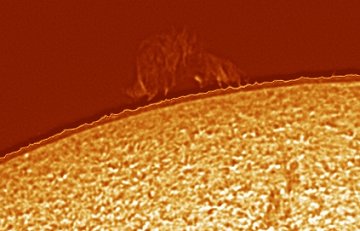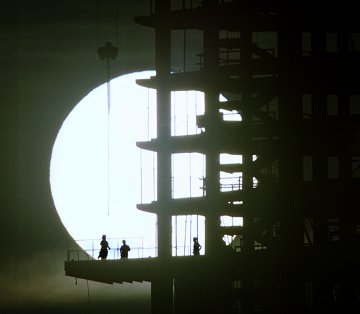 Where's Saturn? Is that a UFO--or the ISS? What's the name of that star? Get the answers from mySKY--a fun new astronomy helper from Meade. . Where's Saturn? Is that a UFO--or the ISS? What's the name of that star? Get the answers from mySKY--a fun new astronomy helper from Meade. . PERUVIAN METEORITE: Astronomers and geologists are increasingly convinced that a meteorite did land in Peru last weekend. Iron-rich magnetic fragments have been recovered from the curiously-wet crater and impact signals have been found in South American seismic records. Sensational reports that a shot-down US spy satellite made the crater seem to be incorrect. AURORA WATCH: High-latitude sky watchers should be alert for auroras tonight. Earth is entering a high-speed solar wind stream, which could trigger a geomagnetic storm. SOLAR PROMINENCE: This morning in the Philippines, John Nassr looked for the first time through his new Personal Solar Telescope and, he says, "I was welcomed by a large prominence!" Here it is: 
The fiery archway is big enough to hold the entire planet Earth with room to space. "It's a big one," agrees Greg Piepol of Rockville, Maryland, who snapped this follow-up photo hours later. The face of the sun may be blank and dull--see below--but the edge is definitely worth watching. If you have a solar telescope, take a look. BLANK SUNS: The sun has been blank--no sunspots--for 14 consecutive days. It's a sign of solar minimum. If forecasters are correct, the absolute rock bottom of the solar cycle will come in March 2008. Is this exciting? In a sense it is. The blank days we see now herald a sea change to come in March when the sun transitions from a quieting star to an increasingly active one. Meanwhile in Texas, Sam Cole was eager to photograph some kind of sunspot, so last week he angled the sun behind a construction project near the shore of Austin's Lady Bird Lake: 
"This was a super-duper-duper fleeting moment," he says. "I caught the huge blank sun shining through the 20th story of our new 360 tower. The busy workers looked like large ants or bees." No sunspots? No problem, says Cole. Just make your own.
September 2007 Aurora Gallery
[August 2007 Aurora Gallery] [Aurora Alerts] | 
